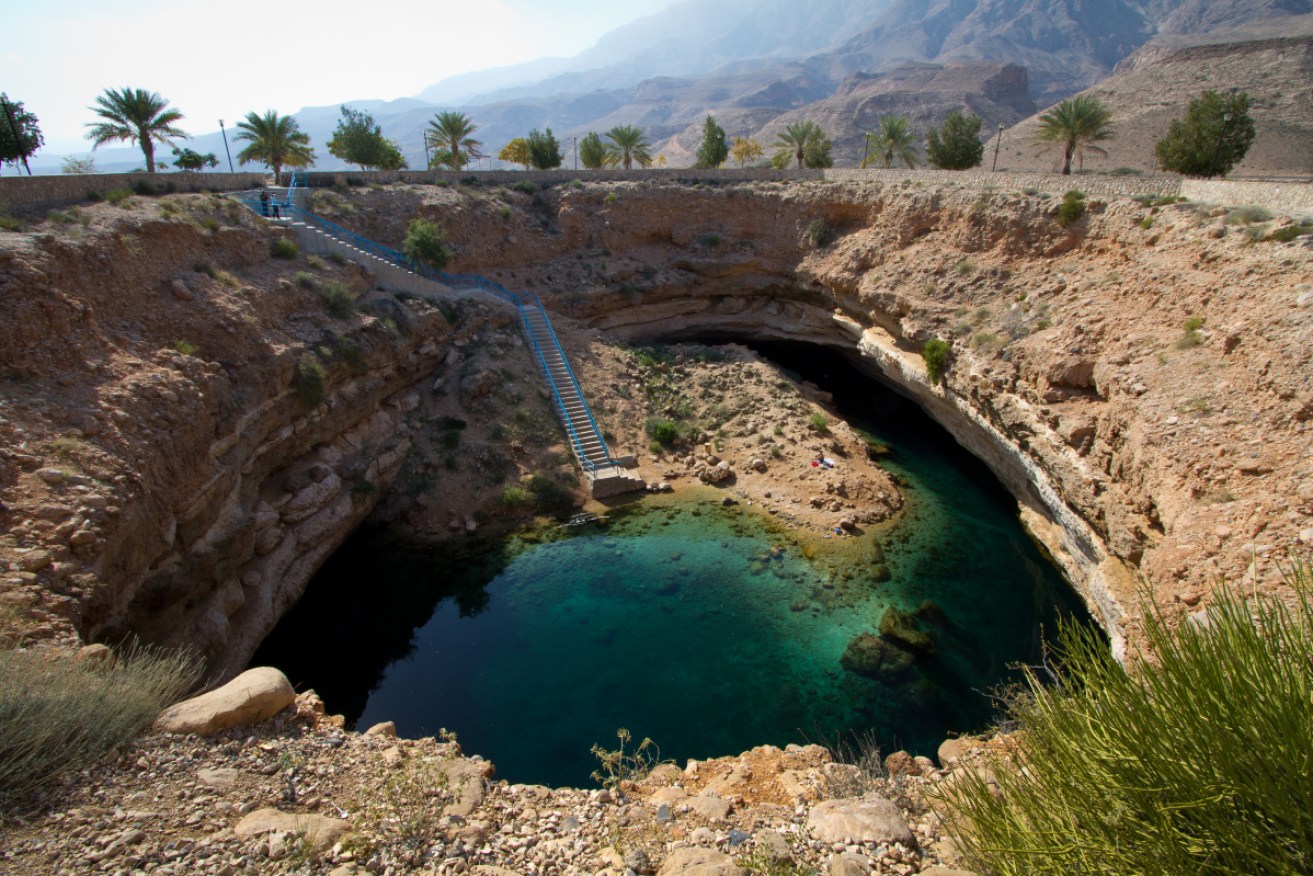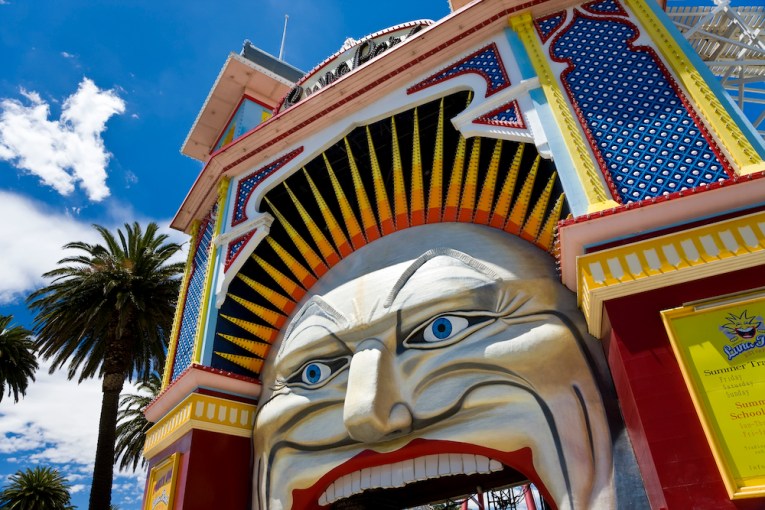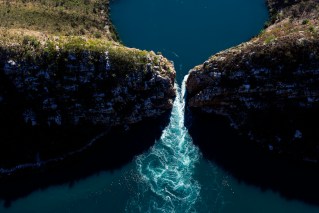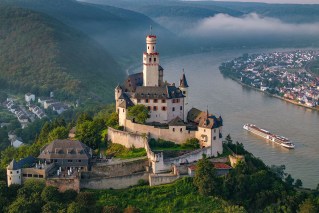Ready to dip a toe in? These are the most exotic places in the world to swim


Come on in, the water's great – Hawaiyat Najm in Oman. Photo: Getty
A new Lonely Planet guide reveals some of the world’s most exotic places to swim.
Bazaruto Archipelago, Mozambique
Sail away to a pristine tropical archipelago home to some of Africa’s most exquisite beaches.
Famous for its snow-white sand spits that peek through aqua blue waters with each outgoing tide, and home to myriad wildlife including pink flamingos, turtles and more than 200 species of fish, this five-island archipelago just off mainland Mozambique has been described by the World Wildlife Fund as a “gift to the Earth”.
The exclusivity of the Bazaruto, designated a national park in 1971, is part of the appeal for deep-pocketed visitors – there are hotels on only two of the islands (Bazaruto and Benguera), and they’re all high-end.
But travellers on a budget can still have the chance to laze on its untouched beaches, snorkel atop offshore reefs and visit wildlife habitats on day tours by dhow (traditional sailing boat) and motorboat operated from the mainland town of Vilankulo.
With a good chance of spotting dolphins and even dugongs from the boat, it’s an African safari of another kind.
Activities: snorkelling, scuba diving
How do I get here? There are small airports on Bazaruto and Benguera islands but most visitors fly into Vilankulo on the coast of Mozambique and take a helicopter or boat transfer to their island hotel.
What are the accommodation options like in Vilankulo? There are sleeping options to suit every budget in this southern Mozambique travel hub, and some decent beaches, too.
When is the best time to go? Aim for the May-to-November dry season.

It might look like a painting, but Mozambique’s Bazaruto Archipelago is very real. Photo: Shutterstock
Lençóis Maranhenses, Brazil
Desperate with thirst, those lost in the desert might believe they see water when it’s only a mirage.
But these sand dune pools are delightfully real. Stretching 1550 square kilometres along Brazil’s north-eastern coast, the fittingly named Lençóis Maranhenses (bed sheets of Maranhão) is a vast national park of gentle powder-white dunes filled with crystal-clear rainwater lagoons.
Taking a dip here is a singular experience. Floating on your back, the only sound you’ll hear is that of tiny bubbles popping by your fingertips and the only thing moving will be the clouds above.
Lençóis Maranhenses is often mistakenly referred to as a desert, but it gets too much rain to fit that definition. Instead, two rivers push sand to the Atlantic Ocean and intense winds send it 50 kilometres inland. When the sand mixes with mud beneath mangrove trees, it turns the once-lush forest into dust.
Each year, more and more forest – and even entire villages – are swallowed up by the majestic, yet menacing sand. It is breathtaking to see the creeping change year over year.
Activities: kayaking, windsurfing
Are there really no crowds? OK sure, there are tours near the town of Barreirinhas, particularly from July to September when the lagoons are at their deepest. But if you enter from Santo Amaro or visit Atins, a windsurfing village, solitude is truly possible.
What’s the best way to see it? From the tiny airport in Barreirinhas, fly over in a vintage plane: The rolling sheets from this vantage
point are incredible. Most people lagoon hop on 4WD tours. The
really adventurous wake up before the sun blazes and do multiday treks along the dunes to the village oases Queimada dos Britos and Baixa Grande.

The incredible beauty of Lencois Maranhenses in Brazil. Photo: Shutterstock
Hawaiyat Najm (Bimmah Sinkhole), Oman
Take a refreshing dip in one of Oman’s most accessible – and unusual –natural swimming holes.
Sinkholes are often created by groundwater eating away at limestone and carbonate. Caverns form as the minerals dissolve, and eventually the ground above caves in.
In Oman’s north-east, just off the highway between the villages of ibāb and Bimmah, there’s a particularly beautiful example of this natural phenomenon.
Better known as Bimmah Sinkhole, Hawaiyat Najm has a sparkling, semi-circular blue-green pool at its base, its idyllic hue attributed to the mixing of mineral-rich fresh water from underground rivers and the saline water of the ocean just 600 metres away.
A concrete staircase leading down to the pool detracts from the natural beauty of the 50 metre-wide sinkhole somewhat, but it also makes access a cinch.
It’s possible to jump into the water from a low cliff on the opposite side of the pool, though the water is not deep enough to safely jump from the top of the sinkhole, which rises 20 metres above the water’s surface.
How do I get here? The sinkhole is about 85 minutes’ drive south of Muscat along the main coast road. If you’re not keen to hire a car, it’s possible to book a tour from the capital.
Is there a good time to come? Easy accessibility means the sinkhole can get quite busy, especially on weekends, so aim for a weekday in the early morning or late afternoon for more privacy.
Is there any marine life in the sinkhole? Dangle your feet in the pool for a free fish pedicure. If you stand still in the water for a few minutes, the tiny fish will nibble the rest of your body, too.

Come on in, the water’s great – Hawaiyat Najm in Oman. Photo: Getty
Mataranka Thermal Pool, Australia
The Australian outback can be notoriously forbidding, but not at Mataranka, where thermal pools fold visitors into a warm and wet embrace.
Just over an hour by car from Katherine and easily visited as a day trip, the little township of Mataranka has secured its place on the map through its sandy-bottomed thermal pools in natural settings, surrounded by cabbage palm and paperbark trees.
There are only two swimmable pools: Bitter Springs, which was found by telegraph line surveyors in the 19th century and is now within the boundaries of Elsey National Park, and the larger Mataranka Thermal Pool.
Remember: it’s always smart to respect the swimming signs, since saltwater crocodiles inhabit the nearby Roper River.
The pools’ gloriously clear, spring-fed, mineral-rich waters come bubbling out of the ground – at more than 30 degrees in the case of the Mataranka Thermal Pool – and certainly carry medicinal reward, but it’s the emotional boost from the surrounding environment, often including flying foxes, that truly inspires.
When should I visit? The pools are open all year-round, but the most popular time of year is May to October. That’s when the days are warm and dry, but the nights still get cool.
What should I bring? Everything that you’ll need, especially a swimsuit and towel. Since these are natural outdoor springs, a hat, sunscreen, bug repellent and drinkable water are also pretty key.
Is there more to Mataranka than the thermal springs and hikes There’s the Never Never Museum, the Elsey Homestead Replica and some interesting World War II history, including an Aboriginal army camp just south of Mataranka township.

Bitter Springs by name, delightful by nature – Mataranka pools. Photo: Shutterstock
Big Lagoon, Philippines
Kayak on the turquoise waters of the Philippines’ most iconic natural lagoon.
Big in size and impact, this cerulean “marine lake” surrounded by towering limestone cliffs is one of the most defining aerial images of Palawan Province. It’s most commonly visited on the “Tour A” island-hopping day trip run by various operators in El Nido.
The lagoon rules dictate that tour boats moor in deeper waters outside the long, shallow channel that connects the lagoon to the ocean. From here, visitors have the option of kayaking or swimming into the lagoon.

You might need to wait, but it will be worth it to see and swim at Big Lagoon. Photo: Getty
While you can stand up when you move further into the channel, opting for a kayak makes it much easier to explore and admire the interior “lake”. You can also pull your kayak onto a handful of tiny beaches in the channel if you fancy taking a dip.With visitor numbers now restricted by the number of kayaks available (50), you may have to queue for a while, but it’s absolutely worth it.
Can I stay here? Yes! The luxe Miniloc Island is the only resort on the lagoon’s island.
Reproduced with permission from Lonely Planet’s The Joy of Water, hardback, $29.99, out now. C 2020 lonelyplanet.com.au









